Test Management Tips: End-to-End Requirement Management
TestMonitor’s Test Management Tips series builds on our Ultimate Guide to Effective Test Management, taking each of the recommendations in that guide and diving deeper into their implementation steps and how they enhance testing processes and improve overall project quality.
This Test Management Tip focuses on a common challenge faced by software testing teams: The lack of a centralized method for managing requirements.
Unfortunately, many teams resort to using multiple spreadsheets and emails to track and communicate requirements, leading to inefficiencies from duplicate data entry, version control problems, and miscommunication.
This article explores how TestMonitor provides a proven solution for structuring and streamlining requirement management and shows you how this approach can benefit QA teams in the process.
Understanding the Importance of End-to-End Requirements
Requirements define what it means to deliver a successful software project. They dictate what needs to be developed and how it should function. However, simply having a list of requirements in a document, spreadsheet, or project plan is not sufficient; there needs to be a method to effectively manage these requirements throughout the entire lifecycle of a project.
Having a mechanism that enables your QA team to have end-to-end requirement management ensures that every aspect of a product, from initial concept to final delivery, aligns with the intended goals and objectives. By maintaining proactive control over requirement completion and status from start to finish, teams can avoid costly rework, ensure consistency across the project, and ultimately deliver a product that meets user expectations and business needs.
Some other key benefits include:
- Improved predictability and prioritization around schedule, resource, and budget management.
- Enhanced collaboration among team members.
- Better alignment between development and testing efforts.
- Reduced risk of scope creep or missed requirements.
- Increased customer satisfaction through improved product quality.
- Clear, jargon-free goals agreed upon by all stakeholders.
- Easily recognizable indicators of progress and outcomes for everyone involved.
The Role of Test Management Systems
Fortunately, Test Management platforms make the requirement traceability function intuitive, interactive, and easily reportable. Leading platforms can also make it easy for teams to manage the transition from requirement development to sequencing and running actual testing activities.
In other words, test management platforms help create, organize, and execute tests based on the project's requirements and their priority, offering a centralized platform where teams can:
- Document test plans.
- Develop test cases based on defined requirements.
- Track test cases and create test runs.
- Manage issues and defects in a way that is tied to specific requirements.
- Report on test outcomes.
By centralizing these functions, Test Management systems streamline the testing process, reduce errors, and enable teams to focus on more strategic aspects of testing instead of managing multiple disparate documents.
How TestMonitor Delivers
TestMonitor is specifically designed with these QA needs and goals in mind. By automating many of the manual tasks associated with QA testing and test management with a secure, intuitive, and cloud-based interface, TestMonitor facilitates better communication among team members, allowing for real-time updates on test status and progress. This is especially valuable in large projects where multiple stakeholders are involved and information like defects and testing statuses needs to be shared quickly across teams.
TestMonitor also enhances:
- Data-driven decision-making: Provides actionable insights based on real-time test data, enabling teams to make informed decisions about product quality and release readiness.
- Scalability and flexibility: Adapts easily to growing project needs and changing requirements, supporting both small-scale and large-scale testing initiatives.
- Risk reduction: Identifies potential issues early in the development cycle, reducing the likelihood of costly rework.
In particular, one of TestMonitor's key features is its ability to track the entire lifecycle of each requirement—from initial intake and testing to issue resolution and final closeout. This provides real-time insights into project health and timing, amplifying the productivity of the QA team.
Bringing It All Together
No matter the size or scope of the development effort, effective end-to-end requirement management is crucial for successful software development projects. By implementing a robust Test Management platform like TestMonitor, teams can streamline their QA processes, ensure they are delivering on prioritized business and technical requirements, and improve overall software quality.
Are you ready to see how TestMonitor can benefit your test management needs? We invite you to try our 14-day free trial and experience firsthand how our platform can transform your QA processes from end to end.






